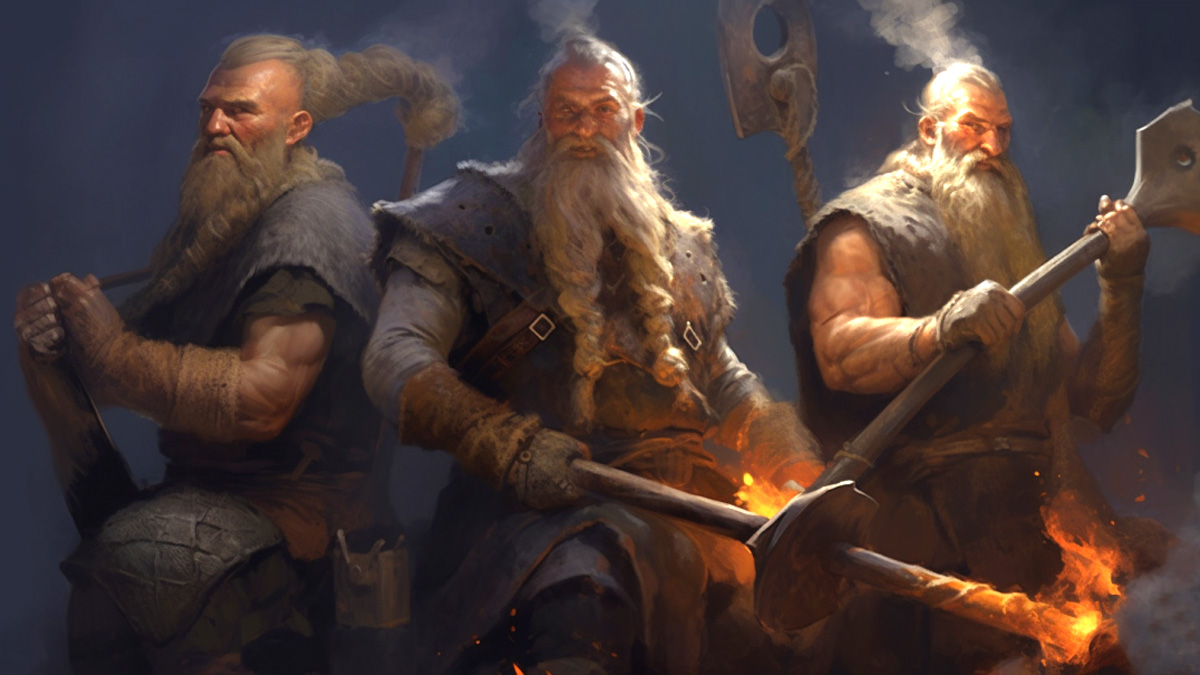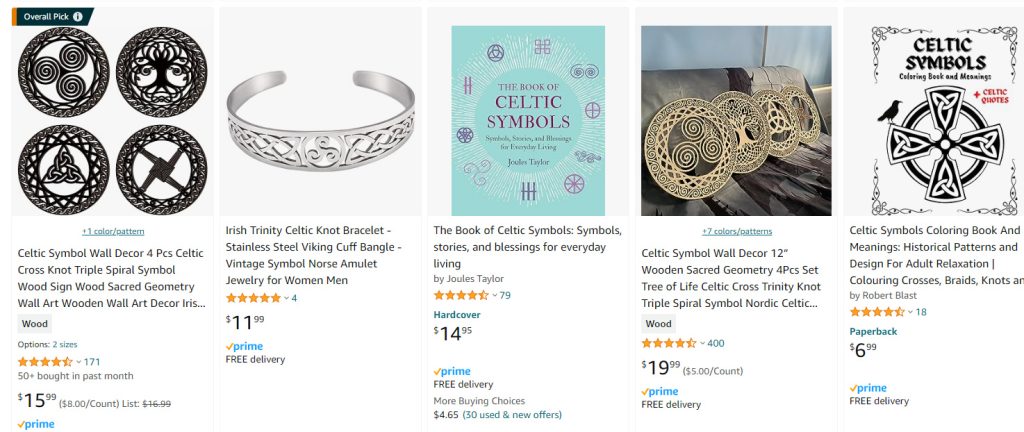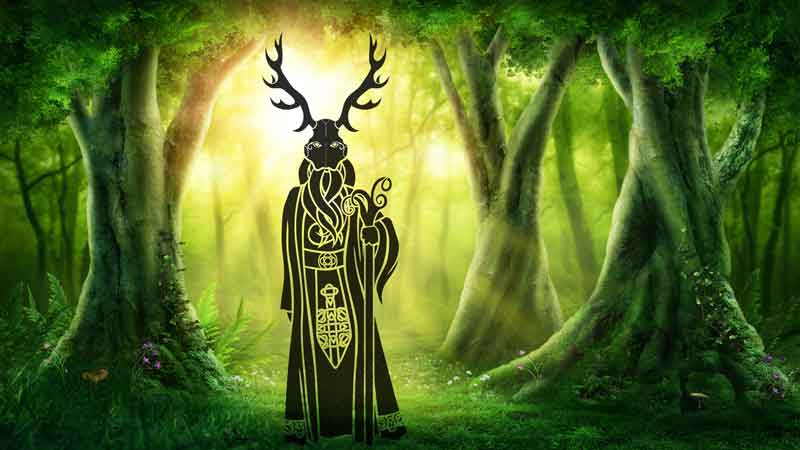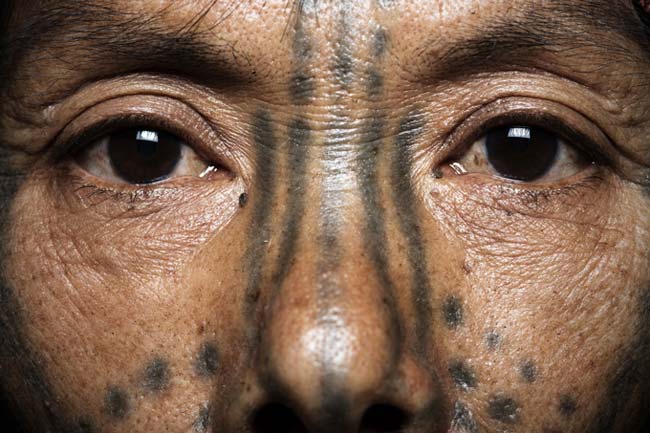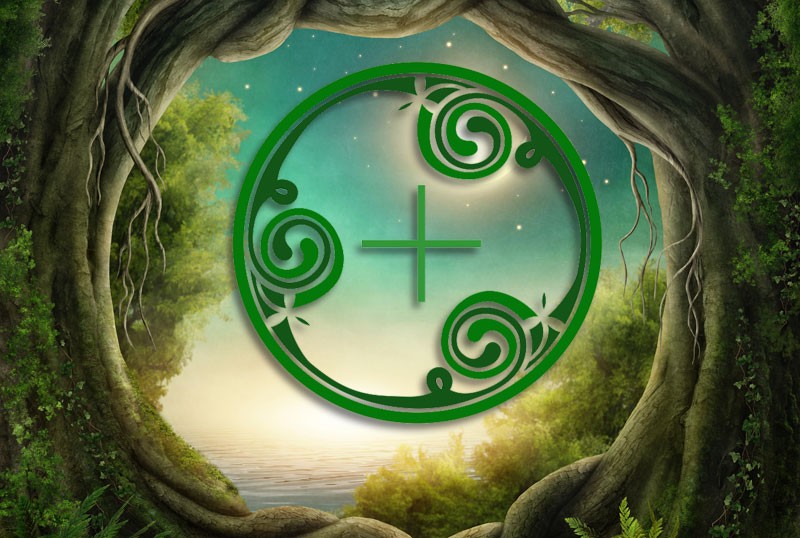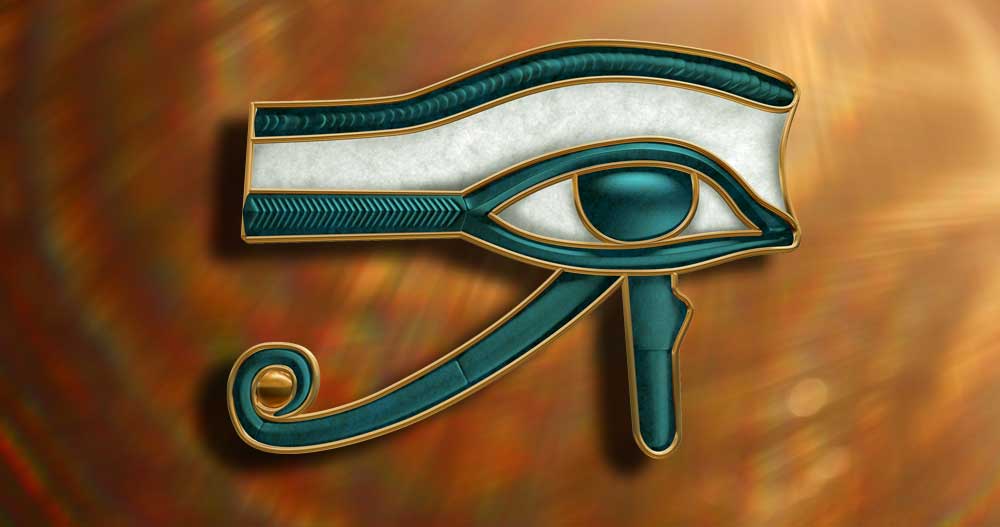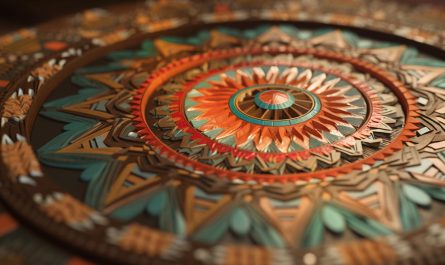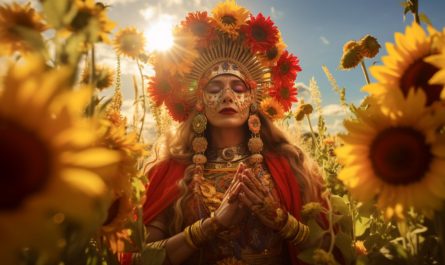Last Updated on May 15, 2024 by Avia
Years ago, I had the great pleasure of making friends with George, a historian of ancient Celtic culture and lore. While talking over pints in a pub, my friend regaled me about these little-known Celtic gods of creativity – at least that’s what my imagination labeled the Celtic god Gobhniu and his winggods (like wingmen, only deific) Luchta and Creidhne. As my friend unraveled the utterly fascinating tales and details of these Celtic gods of metalsmithing, I was completely wrapped in the legends. I thought maybe you might be intrigued, too, so I wanted to talk to you about these obscure yet powerful Celtic smith gods, their legacy, special powers, and how they hammered their way into Irish history. Let’s hope I make my historian friend George proud in retelling these regal tales!
Table of Contents
- Introduction To Gobhniu, Luchta, and Creidhne
- The Role of Metalsmithing in Celtic Lore and Culture
- History and Legends of Gobhniu in Celtic Lore
- Who is Gobhniu?
- Who is Luchta?
- Who is Creidhne?
- The Role These Three Celtic Gods Played in the Battle of Magh Tuiredh
- About the Feast of Gobhniu
- Frequently Asked Questions About Gobhniu
- Closing Thoughts About Celtic Gods of Creativity and Metalworking
- Avia’s Amazon Picks for You
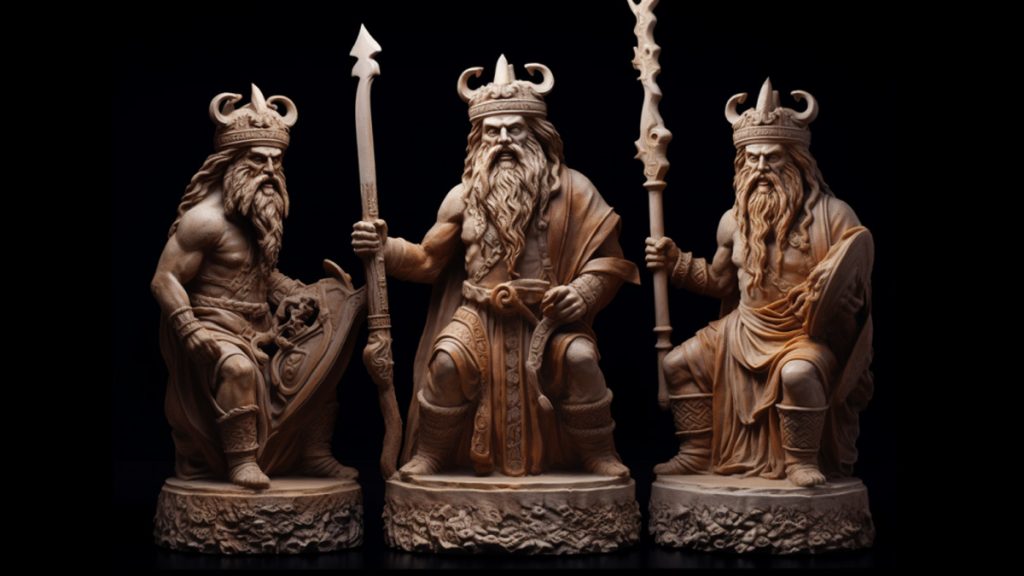
Introduction To Gobhniu, Luchta, and Creidhne
In ancient Celtic lore, there were epic gods who ruled over realms of creativity, craftsmanship, and metalworking. In the rich tapestry of Celtic mythology, three powerful deities stand tall as masters of their crafts: Gobhniu, Luchta, and Creidhne. These divine figures not only shaped metals but also shaped the destiny of the Tuatha De Danann in epic battles and legends.
My friend George gave me amazing details and a historical download, so it just makes sense to share what I learned with you and explore their stories, unravel their significance in ancient Celtic culture, and discover why these Celtic gods continue to inspire awe even today. Brace yourself for an enchanting adventure through history with these exceptional Celtic gods of metalsmithing.
The Role of Metalsmithing in Celtic Lore and Culture
Before I hit the main attraction and talk about the Celtic gods Gobhniu, Luchta, and Creidhne – I wanted to touch on the critical role of craftsmanship and metalworking in ancient Celtic culture.
Metalsmithing holds a significant role in Celtic lore and culture, showcasing the craftsmanship and creativity of the ancient Celts. The art of shaping metal into intricate designs and functional objects was a highly valued trait among these ancient peoples. Metalworking played a crucial part in their daily lives, from jewelry to weapons.
The Celts believed metals had magical properties, connecting them to the gods. Through their skillful hands, they could channel divine power into their creations. This belief cultivated a deep reverence for those skilled in the craft of metalsmithing.
In Celtic mythology, the gods associated with metalworking were revered as deities who possessed extraordinary abilities. Gobhniu, Luchta, and Creidhne were three such gods known for their mastery over metals and creative prowess.
These deities influenced physical aspects like weaponry and adornments and symbolized attributes like strength, protection, and beauty. They embodied the ingenuity required to transform raw elements into exquisite works of art.
Through their mythological tales passed down through generations, these gods became synonymous with inspiration for artists and artisans alike. Their stories served as reminders of the importance of creativity in Celtic society – a testimony to how artistry knows no boundaries.
Thus, it becomes evident that metalsmithing held immense significance within Celtic culture; it represented practicality, spirituality, and artistic expression. The legacy left by Gobhniu, Luchta, and Creidhne continues even today as we admire intricate Celtic designs adorning jewelry or appreciate fine craftsmanship in unique metallic objects inspired by this rich heritage.
History and Legends of Gobhniu in Celtic Lore
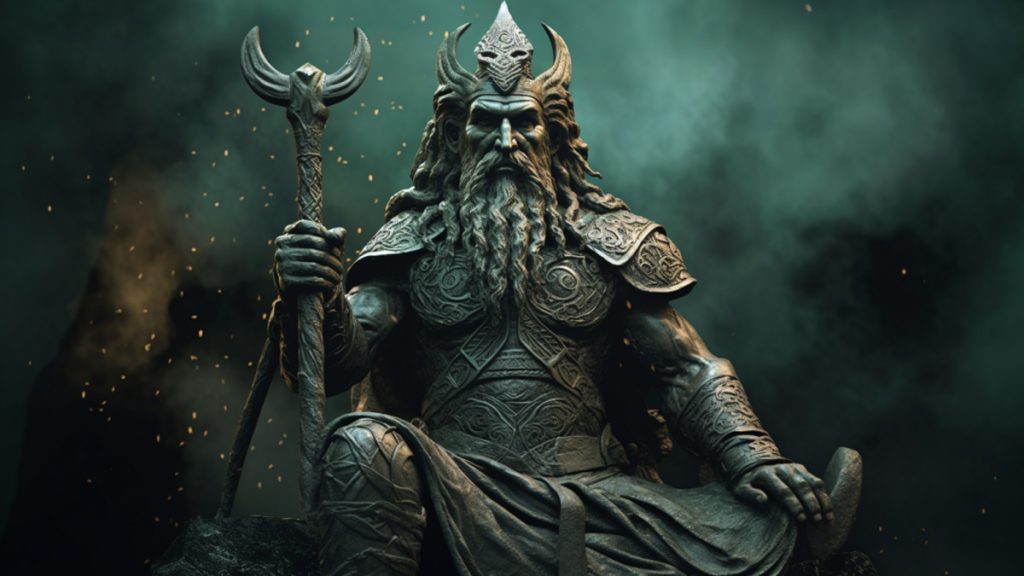
Gobhniu, the Celtic god of metalsmithing and craftsmanship, holds a prominent place in ancient Irish mythology. In Celtic lore, he is revered as the master artisan, known for his exceptional skills in forging weapons and creating intricate jewelry. His name itself means “smith” or “metalworker,” emphasizing his importance in Celtic culture.
Legends depict Gobhniu as a powerful deity who possessed unparalleled knowledge of metallurgy. It was believed that he could easily transform raw materials into magnificent works of art. He was said to have crafted magical weapons that bestowed invincibility upon their wielders during battles.
One such legend tells the story of how Gobhniu created a cauldron called the Undry, which had the power to resurrect fallen warriors. This cauldron played a crucial role in reviving soldiers after battles, ensuring their immortality on the battlefield.
Another tale speaks of Gobhniu’s ability to heal wounds instantly using his divine powers. Warriors sought his assistance before going into battle, relying on his expertise to mend any injuries they might sustain. Additionally, he was credited with inventing beer-making techniques and promoting communal feasting rituals among Celts.
While many tales celebrate Gobhniu’s prowess as an extraordinary craftsman and healer, others highlight his involvement in epic battles where he fought alongside other deities against formidable enemies. The Battle of Mag Tuired stands out as one such event where Gobhniu showcased his combat skills and acted as an advisor strategizing warfare tactics for the Tuatha De Danann (I’ll talk about that a little more in a minute).
Who is Gobhniu?
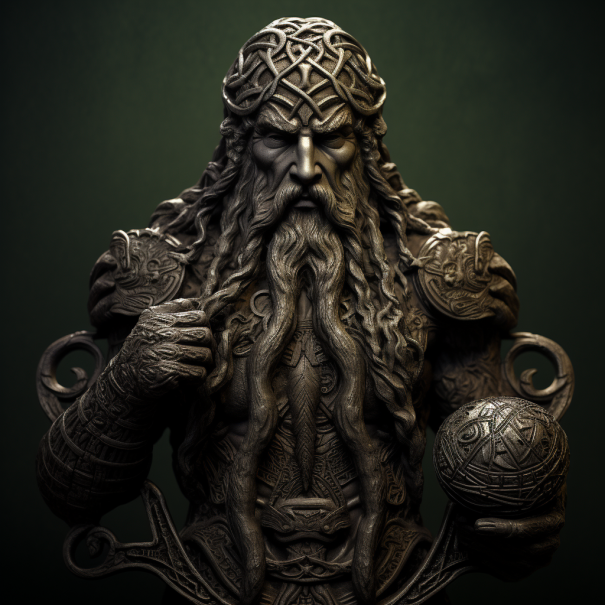
Gobhniu, one of the powerful Celtic gods, is associated with metalsmithing and craftsmanship. In Celtic lore, he is known as the divine blacksmith with exceptional metalworking skills.
Legend has it that Gobhniu can forge weapons and tools of incredible strength and durability. His creations are said to carry magical properties, making them highly sought after by warriors and craftsmen alike.
But Gobhniu’s influence goes beyond his mastery of metalsmithing. He is also considered a god of healing and rebirth. It is believed that he had the ability to bring fallen soldiers back to life on the battlefield.
In addition to his role as a skilled craftsman and healer, Gobhniu was revered for his wisdom and knowledge. He was seen as a source of inspiration for poets, artists, and musicians – guiding them in their creative endeavors.
Gobhniu played an important role in Celtic society as a deity associated with creativity and craftsmanship. His presence ensured physical protection and fostered innovation and artistic expression among the people.
While many details about Gobhniu may have been lost over time, his legacy lives on through ancient myths and legends passed down through generations. Today, those who appreciate artistry and ingenuity still honor this enigmatic figure whose talents transcended mere mortal capabilities.
Who is Luchta?
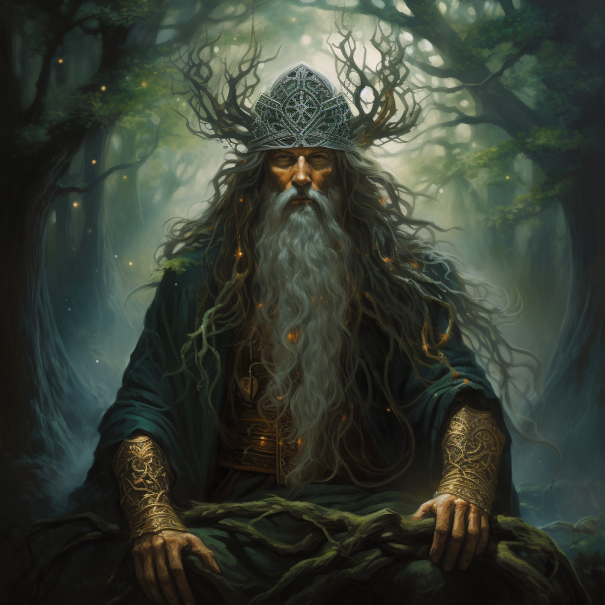
Who is Luchta? In Celtic mythology, Luchta is known as the god of craftsmanship and woodworking. He possesses unparalleled skill in creating intricate wooden structures and objects. With his nimble fingers and a keen eye for detail, he can fashion anything from beautiful furniture to sturdy ships.
Luchta’s name translates to “the wright,” which refers to a skilled craftsman or builder. He is often depicted as a strong figure with muscular arms, symbolizing his mastery over woodwork and construction. From crafting tools and weapons to constructing homes and temples, Luchta’s creations are renowned for their beauty and durability.
In ancient Celtic culture, woodworking held great significance as it played a crucial role in everyday life. Furniture was not just functional but also served as status symbols. The skills of Luchta were highly sought after by kings, warriors, and common folk alike.
Legends tell tales of Luchta working alongside other deities, such as Gobhniu (the Celtic god of metalsmithing) and Creidhne (the god of creativity) during the Battle of Magh Tuiredh. Together, they used their divine talents to create powerful weapons that would aid the Tuatha De Danann in defeating their enemies.
As my historian friend advised me, I’ll remind you that the importance placed on craftsmanship by the Celts extended beyond practicality; it was seen as an expression of divine creativity within humans. By venerating gods like Luchta, the Celts acknowledged both the practical value of woodworking skills and its spiritual connection to creation itself.
Who is Creidhne?
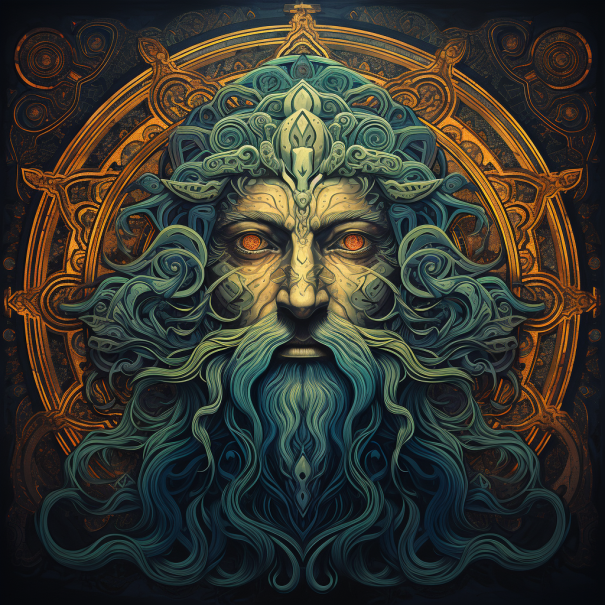
Creidhne is often depicted as a skilled artisan, working diligently to create intricate pieces of jewelry and weaponry.
In Celtic lore, Creidhne’s craftsmanship was highly revered by both humans and gods alike. His creations were said to possess magical qualities that brought protection and good fortune to those who possessed them. Whether a beautifully crafted necklace or an exquisitely designed sword, each piece held its unique power.
One legend tells the story of how Creidhne forged a set of silver chains for the goddess Áine. These chains had the ability to bind anyone who wore them with unbreakable loyalty and love. This myth highlights his skills as a metalsmith and his connection to love and relationships.
In addition to his role in metalworking, Creidhne was also associated with creativity and inspiration. He was believed to be able to breathe life into raw materials, transforming them into works of art that captured the imagination.
Although not as well-known as some other Celtic gods, Creidhne played an essential role in shaping ancient Celtic culture through his mastery of craftsmanship and artistic expression.
The Role These Three Celtic Gods Played in the Battle of Magh Tuiredh
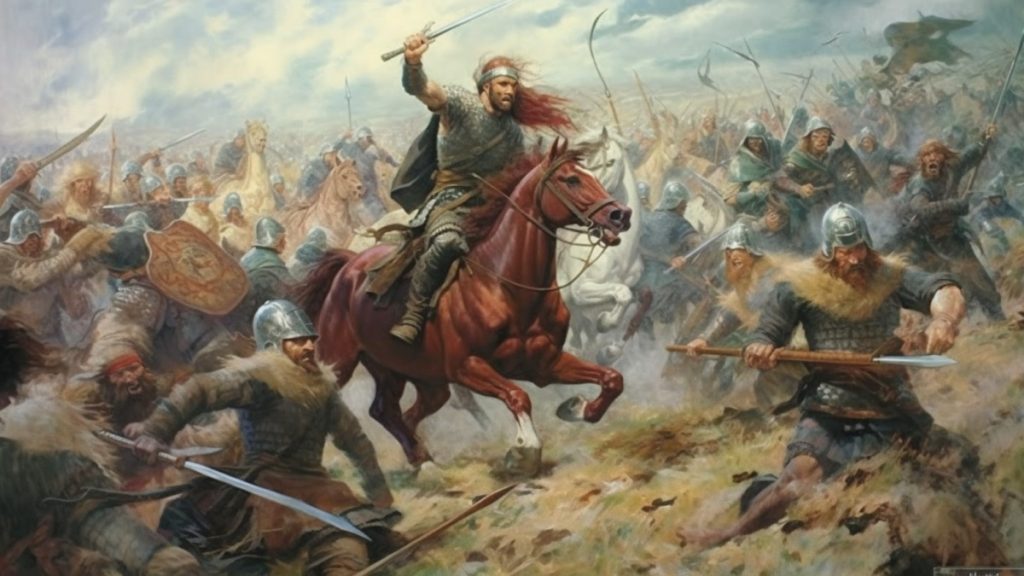
The Battle of Magh Tuiredh was a significant event in Celtic mythology, and Gobhniu, Luchta, and Creidhne played crucial roles during this epic battle. These Celtic gods of creativity were responsible for crafting powerful weapons that turned the battle in favor of the Tuatha.
Gobhniu’s skill as a blacksmith allowed him to forge powerful swords and spears that gave the Tuatha De Danann warriors an advantage on the battlefield. With each swing of their enchanted weapons, they struck fear into their foes.
Luchta, known for his expertise in woodworking and carpentry, used his talents to construct chariots for the warriors. These chariots became invaluable assets during battles, providing mobility and strategic advantages for their riders. Luchta’s craftsmanship ensured that these vehicles were sturdy yet lightweight enough to navigate through rough terrains effortlessly.
Creidhne brought his artistic abilities to aid in creating magnificent armor for the warriors. The intricate designs he crafted protected them and bestowed upon them an air of intimidation as they marched onto the battlefield.
Gobhniu’s weaponry skills, Luchta’s chariots, and Creidhne’s armor formed a formidable force that helped turn the tide of battle in favor of the Tuatha De Danann. Their collaborative efforts showcased their individual talents and highlighted how creativity could be harnessed for victory in times of war.
In this legendary battle where gods clashed with enemies from another realm, it was clear that these three Celtic gods’ contributions were essential to ensure triumph over adversity. Their creative prowess elevated ordinary objects into symbols of power on a battleground filled with chaos and uncertainty
About the Feast of Gobhniu
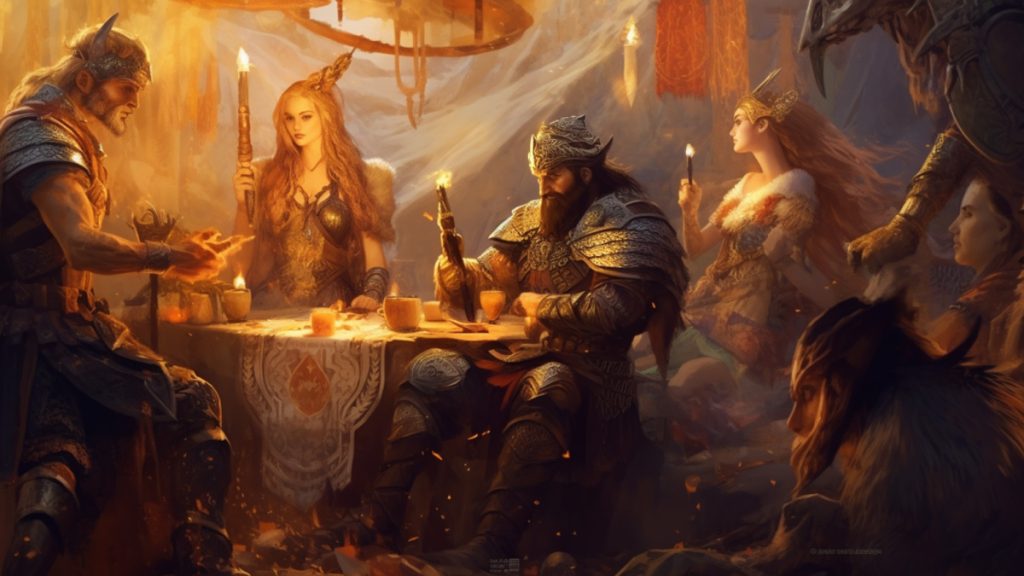
The Feast of Gobhniu was a significant event in Celtic mythology, celebrated to honor the god of metalsmithing and craftsmanship. This annual feast brings together artisans, craftsmen, and community members from all corners of Celtic lands. It was a time for creativity to shine and for individuals to pay homage to Gobhniu’s divine inspiration and appreciate the art of smithing gods, metalworking and other ancient crafts.
The atmosphere at the Feast of Gobhniu was filled with excitement and anticipation as talented artists display their intricate creations. In addition to showcasing artistic prowess, the feast also allows craftsmen to exchange knowledge and ideas. At nightfall, the festivities continue with music, dancing, and storytelling around bonfires – creating a sense of community among those who share a passion for creativity.
The Feast of Gobhniu celebrated artistic excellence and acknowledges the vital role metalsmithing and crafts played in ancient Celtic culture.
Interestingly, to this day, an obscure Welsh law states that any metalsmith or craftsman at any feast must be served the first drink above all others. This is a great example of how the Celtic gods of creativity and how the Celtic culture generally honors the talent, skills, and importance of craftsmanship.
Frequently Asked Questions About Gobhniu
Gobhniu is a powerful Celtic god associated with metalsmithing and craftsmanship. He is known as the divine blacksmith, revered for his skill in creating intricate metalwork and weaponry. Gobhniu’s name derives from the Irish word “gobha,” meaning smith, emphasizing his role as the patron of all craftsmen.
In Celtic lore, there are many fascinating tales involving Gobhniu. One notable legend tells of how he crafted magical weapons with incredible powers capable of easily vanquishing enemies. Another story recounts how he forged a mystical cauldron that had the ability to restore life to fallen warriors.
Gobhniu shares strong connections with two other prominent deities: Luchta and Creidhne. Together, they form a trinity of craft gods who were instrumental in shaping ancient Celtic culture through their creative endeavors.
The Celts revered Gobhnui for his unparalleled talent in metalsmithing and crafting. They believed that by paying homage to him through rituals and offerings, they would gain favor in their creative pursuits or receive protection during conflict.
The Feast of Gohbniu was an important celebration dedicated to honoring this skilled deity. It is marked by feasting, music, dancing, and storytelling – all activities closely related to creativity and craftsmanship.
Closing Thoughts About Celtic Gods of Creativity and Metalworking
Well, I hope I did the tale of Gohbniu and the Celtic gods of metalsmithing justice, according to my historian friend Georg. I believe through sharing these stories, we can still appreciate the legacy left behind by these Celtic deities today. Their influence is evident not only in ancient legends but also through traces found within modern Irish folklore and traditional crafts that continue to thrive.
So, let us raise our glasses to honor Gobhniu’s mastery of metalworking! Let us acknowledge Luchta’s skillful hands that shape beauty out of raw materials! And let us recognize Creidhne’s artistic prowess that brings imagination into tangible form! May their stories continue to inspire creativity and ingenuity for generations to come. As always, thanks for reading. And thanks to George for this great information!
Mighty brightly,

© Copyrighted. All Rights Reserved.
Avia’s Amazon Picks for You
Want More? Check Out These Amazon Selections for Celtic Symbols
Want more? Me too! That’s why I’ve also got this for you on Whats-Your-Sign:
